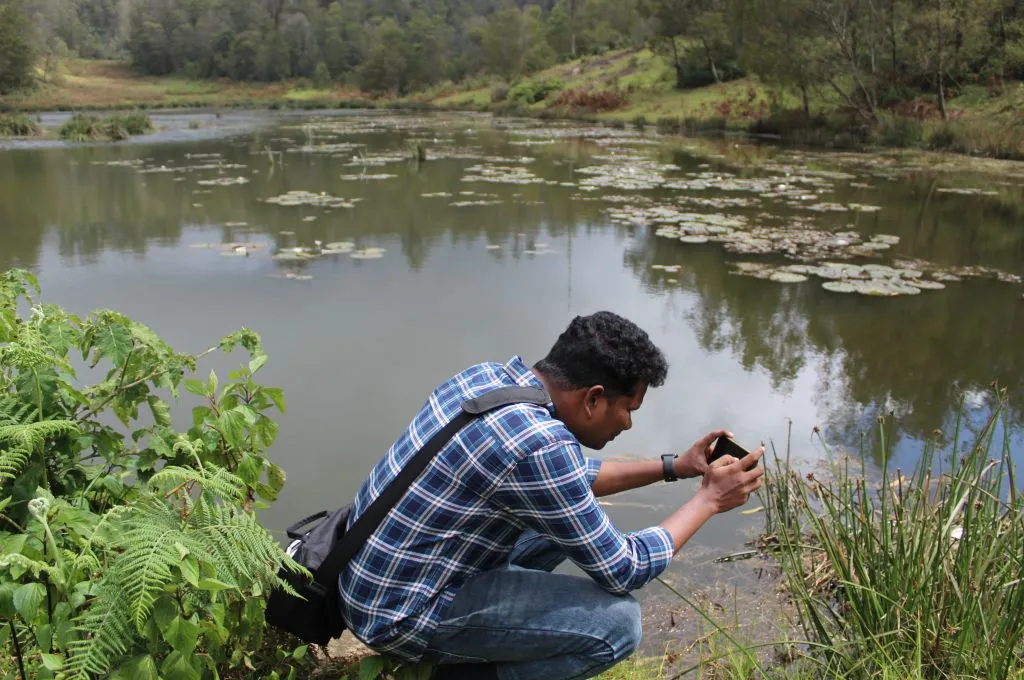Blended finance introduces the idea of harnessing capital, especially from the private sector, to support development and impact-driven projects. The concept of blending capital from multiple sources, such as in the case of public–private partnerships, has been around for a long time. The government has leveraged this approach to fund a variety of development objectives—from infrastructure to sourcing credit for MSMEs. However, in the last decade, the term ‘blended finance’ has gained popularity in light of the critical capital requirements to meet the sustainable development goals (SDGs) as well as for climate financing. This is because blended finance strategically uses public and philanthropic capital to leverage additional commercial investment, primarily from private sources, with the aim of advancing sustainability objectives.
The need for blended finance
According to the India Philanthropy Report, India witnessed a notable increase in its social sector spending, reaching 9.6 percent of the GDP in FY 2022 as compared to 8.6 percent in FY 2021. The increase was primarily driven by a 35 percent growth in public expenditure. Private philanthropy too has been playing its part by growing at a moderate pace of 8 percent from FY 2017 to FY 2022. Its contribution, as a result, totalled to approximately INR 1.05 lakh crore in FY 2022. In addition, family philanthropy has grown at 12 percent from FY 2017 to FY 2022, albeit, for the most part, in sectors such as education and healthcare. Interestingly, philanthropic capital is beginning to focus on under-represented causes within these sectors such as life skills, teacher training, special needs education, palliative care, and medical care.
Despite this progress, India still falls short (by 13 percent of the GDP) of the estimated total annual funding required to achieve the United Nations SDGs by 2030. Additionally, climate mitigation and adaptation is increasing pressure on government spending. India requires INR 11 lakh crore per year to achieve its Nationally Determined Contributions (NDCs) under the Paris Agreement.
Given this need for funding, innovative financing structures that can mobilise private capital and evaluate the risk of investments should be considered. It is also crucial to enhance the effectiveness of existing government and philanthropic spending, either through robust capital allocation or by establishing a stronger evidence building and monitoring ecosystem.
Financing solutions would require ‘blending’ with a focus on three key areas to address diverse developmental needs: creating an ecosystem that supports and strengthens social interventions, encouraging investment in high-potential innovations, and improving the efficiency and impact of existing grant programmes, ultimately leading to sustainable and inclusive development.

The blended finance landscape in India
Although blended finance has been gaining traction in India, lack of adequate documentation, research, and transparency has led to limited awareness and a homogenous understanding of the topic. This has created a critical need for an India-specific perspective on this innovative impact investment approach. The Blended Finance India Narrative report highlights the key trends in this space. The analysis is built on a transaction database, with 180 transactions spread over more than a decade till 2022, which will help in creating data-driven awareness in the Indian ecosystem and increasing the pools of capital aligned with blended finance. Here are some insights from the report.
1. Overall market size: The blended finance market has seen a steady growth in India at an annual rate of 18.8 percent, reaching a milestone of USD 1.1 billion in 2022. India’s market size is approximately 3.4 percent of the cumulative global market and approximately 40 percent of the market in Asia. However, given the early stage of projects and diverse range of innovative pilot and scaled solutions, India’s average transaction ticket sizes are lower than both the global average and those of neighbouring Asian countries.
2. Key sectors: Financial services and energy have dominated the market, accounting for approximately 65 percent of the market value, mirroring global trends. Additionally, agriculture and livelihoods are emerging as prominent and promising sectors in the blended finance landscape.
3. Investor mix: While development finance institutions (DFIs) and multilateral development banks (MDBs) are the largest investor categories globally, the Indian blended finance market is primarily led by non-banking financial companies (NBFCs) and banks. Together, NBFCs and banks account for 43 percent of all transactions, followed by MDBs and DFIs with a 29 percent share. Some international foundations such as the Michael & Susan Dell Foundation have also participated and played a leading role as catalytic investors.
4. Philanthropic participation: The involvement of domestic foundations and corporate social responsibility (CSR) capital has remained limited. Despite the shared goals of addressing SDG-related issues, philanthropic funders have been hesitant to fully engage in blended finance transactions. Globally, while foundations and nonprofits represent approximately 9 percent of the commitments from 2018–20, the share of philanthropic capital in the Indian space is estimated at less than 2 percent. Among various challenges, lack of clarity around legal and regulatory aspects, inhibitions about working with commercial entities, and lack of awareness around the subject have mainly constrained participation by domestic philanthropic partners.
5. Instruments utilised in blended finance transactions: Debt-based instruments, especially guarantees and insurance, have remained the most popular because commercial investors are familiar with them; this is followed by technical assistance (TA) grants. These instruments play a crucial role in driving growth and fostering innovation, particularly in sectors that are traditionally considered high-risk or involve non-traditional transaction structures.
6. Leverage: One of the critical measures of success for a blended finance transaction is the extent of leverage. Leverage ratio can help determine how effective concessional capital (that is, capital priced below market terms) has been within a blended finance transaction. It is defined as the amount of commercial capital mobilised by each dollar of catalytic or concessional capital. The current blended finance market in India is yielding a leverage of 5x on catalytic capital. As the market matures, a sustained focus on diverse sectors, efficient utilisation of instruments, and collaboration among different investor categories will further improve leverage and propel the growth of blended finance in India.
Challenges faced in scaling blended finance
The blended finance market in India is at a nascent stage but growing faster than ever. There has been an increasing interest among investors, both global and domestic, as well as service providers, indicating significant potential for this segment in the next few years. However, there are several challenges that need to be addressed for blended finance to achieve greater momentum.
1. Lack of clarity around legal and regulatory aspects: Philanthropies are great partners for innovation in development finance as they can work with the public sector to improve risk–return balances while engaging directly with private sector partners. However, current policies and laws, such as CSR and FCRA, restrict the blending of different pools of capital, making it difficult to structure these instruments. Regulatory clarity and push will be required for the blended finance ecosystem to thrive. This can be done through the creation of dedicated platforms/vehicles for blended finance or quasi-government entities that allow for pooling of different capital and issuing of different instruments to facilitate blended structures. A regulatory and financial sandbox (for experimentation to arrive at the relevant structure) could be created to begin with, leading to an appropriate structure to scale blended finance in an institutional manner in the country.
2. Mindset and mistrust issues: Traditional mindsets and risk perceptions prevalent in certain sectors or institutions may impede the adoption and acceptance of blended finance. CSR teams and large domestic foundations often have inhibitions about working with commercial entities, and there is a general mistrust across parties stemming from diverging objectives of financial returns and impact. Foundations and most family offices have perceived investing and philanthropy as separate endeavours and have not fully appreciated the role of high-risk but high-reward investments in driving sustainable development. Overcoming these cultural barriers and promoting a holistic understanding of the potential benefits of blended finance is crucial to fostering awareness.
3. Limited awareness and conversation about blended finance structures: Concepts and models around combining philanthropic capital with commercial investment to achieve social good are not well documented and understood by all stakeholders. More data andcase studies showcasing track records of both financial and social impact created through blended finance projects can help in alleviating these challenges. Targeted efforts to enhance education including capacity-building programmes, workshops, and knowledge-sharing platforms will also go a long way in opening up the market to newer actors.
Opportunities for philanthropy
Philanthropic capital aligns well with the principles of blended finance in pursuing more impact and increased effectiveness of spending while creating more leverage with the limited resources available. Here are a few suggestions for philanthropies to consider using this approach.
1. Driving innovation: Most commercial investors are unable to invest in innovation due to fiduciary responsibilities. As a solution, philanthropic capital with low to no financial return expectations can be used strategically in the form of TA grants, or to design grants to drive innovation.
2. Addressing market failures in impact-focused sectors: Within the philanthropy sector, different sources of funds—from foundations, DFIs, CSR, and family offices—can be used for solving market failures to enable more flow of capital to certain segments of the population or sectors where commercial capital has typically not ventured due to perceived high risk. Some examples are:
- Foundation capital can be used to provide first-loss guarantees (where a third party compensates if a borrower defaults) as risk mitigation measures, especially in sectors that are considered commercially unviable.
- DFIs can help investors and banks achieve scale and volume for impact-focused deals.
- To make CSR capital more result-oriented and effective, outcome-based contracts can be structured, such as the recent Skill India Impact Bond, where CSR pays only if the outcomes of placement and retention are met.
- Family office capital offers flexibility, and hence can be invested across structures—from philanthropic to market-based. There is an increasing understanding among family offices, especially second-generation members, about impact investing.
3. Creating demonstration effects through bespoke structures: While these are usually complex and resource-intensive, bespoke structures such as development impact bonds (DIBs) and social impact bonds (SIBs) present potential for sourcing capital and create a demonstration effect. Once new models are proven to be workable and successful, capital can be raised to scale up interventions.
The concept of blended finance has gained prominence in the last decade as a strategic approach to mobilise private capital for sustainable development. Despite continued efforts and increased spending by the government and philanthropy towards enabling more inclusive and sustainable development, India still faces a significant funding gap to be able to achieve the SDGs and address climate action requirements. It has thus become imperative for public and philanthropic capital to relook at their spending models and innovate for increased effectiveness as well as to crowd in additional commercial capital towards development. By leveraging blending as an approach, we can create the right financial structures and incentives to co-opt this capital. However, it is critical to overcome challenges such as legal and regulatory clarity, mindset shifts, and limited awareness through collective action from different stakeholders to scale the opportunities presented by blended finance structures.
By embracing blended finance and addressing the challenges, India can create a robust ecosystem that attracts private capital, strengthens social interventions, fosters innovation, and maximises the impact of grant programmes, ultimately leading to sustainable and inclusive development.
—







